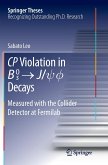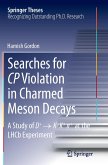This thesis reports on the final measurement of the flavor-mixing phase in decays of strange-bottom mesons (B_s) into J/psi and phi mesons performed in high-energy proton-antiproton collisions recorded by the Collider Experiment at Fermilab. Interference occurs between direct decays and decays following virtual particle-antiparticle transitions (B_s-antiB_s). The phase difference between transition amplitudes ("mixing phase") is observable and extremely sensitive to contributions from non-standard-model particles or interactions that may be very hard to detect otherwise - a fact that makes the precise measurement of the B_s mixing phase one of the most important goals of particle physics. The results presented include a precise determination of the mixing phase and a suite of other important supplementary results. All measurements are among the most precise available from a single experiment and provide significantly improved constraints on the phenomenology of new particles and interactions.








